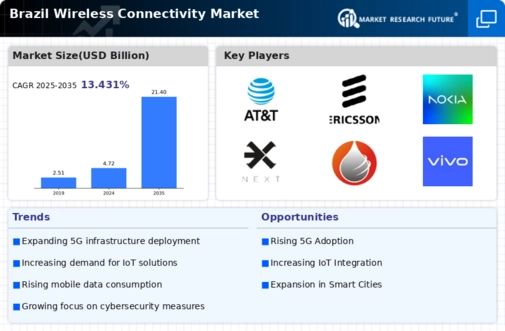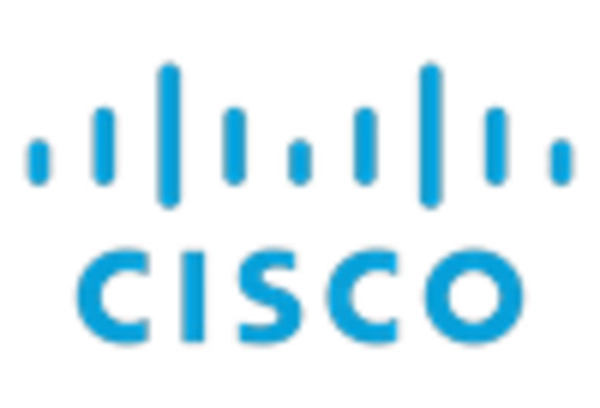Adoption of Smart Devices
The proliferation of smart devices in Brazil is a key driver for the wireless connectivity market. With the increasing penetration of smartphones, tablets, and IoT devices, the need for robust wireless networks has intensified. Recent statistics indicate that over 80% of Brazilians own a smartphone, which has led to a corresponding rise in mobile data usage. This trend suggests that the wireless connectivity market industry must adapt to accommodate the growing number of connected devices. As consumers become more reliant on these technologies for daily activities, the demand for seamless connectivity is expected to escalate, prompting service providers to enhance their offerings.
Evolving Consumer Preferences
Consumer preferences in Brazil are shifting towards more flexible and convenient wireless solutions. The rise of remote work and digital services has led to an increased reliance on wireless connectivity. Recent surveys show that nearly 60% of Brazilian consumers prefer wireless solutions over traditional wired connections for their internet needs. This shift indicates a growing acceptance of wireless technologies, which could lead to a transformation in the wireless connectivity market industry. Providers may need to adapt their strategies to cater to these evolving preferences, focusing on delivering user-friendly and efficient wireless services.
Rising Demand for High-Speed Internet
The wireless connectivity market in Brazil is experiencing a notable surge in demand for high-speed internet services. As more consumers and businesses seek reliable and fast internet connections, the market is projected to grow significantly. According to recent data, approximately 70% of Brazilian households now have access to the internet, with a substantial portion relying on wireless technologies. This trend is likely to drive investments in infrastructure and service enhancements, as providers aim to meet the increasing expectations of users. The wireless connectivity market industry is thus positioned to benefit from this growing demand, as companies innovate to deliver faster and more efficient services.
Government Policies Supporting Connectivity
The Brazilian government is actively promoting policies aimed at enhancing connectivity across the nation. Initiatives to expand internet access in rural and underserved areas are gaining momentum, which is likely to stimulate growth in the wireless connectivity market. Recent government reports highlight plans to invest over $1 billion in expanding broadband infrastructure, particularly in remote regions. This commitment to improving connectivity suggests that the wireless connectivity market industry will benefit from increased funding and support, enabling providers to reach a broader audience and enhance service availability.
Urbanization and Infrastructure Development
Brazil's ongoing urbanization is significantly impacting the wireless connectivity market. As more people migrate to urban areas, the demand for reliable wireless services increases. The Brazilian government has been investing in infrastructure development, aiming to improve connectivity in densely populated regions. Recent reports indicate that urban areas are expected to see a 15% increase in internet users by 2026, further driving the need for advanced wireless solutions. This urban growth presents opportunities for the wireless connectivity market industry to expand its reach and enhance service delivery, ensuring that urban populations have access to high-quality connectivity.
















Leave a Comment